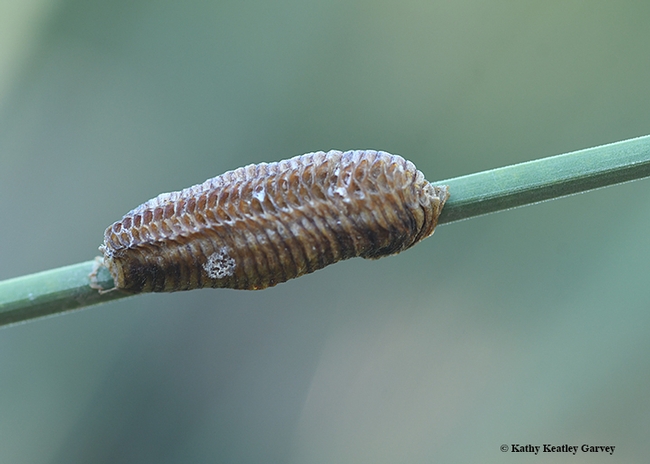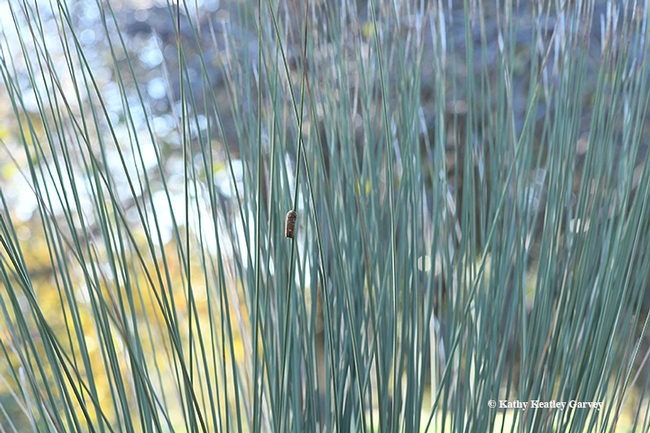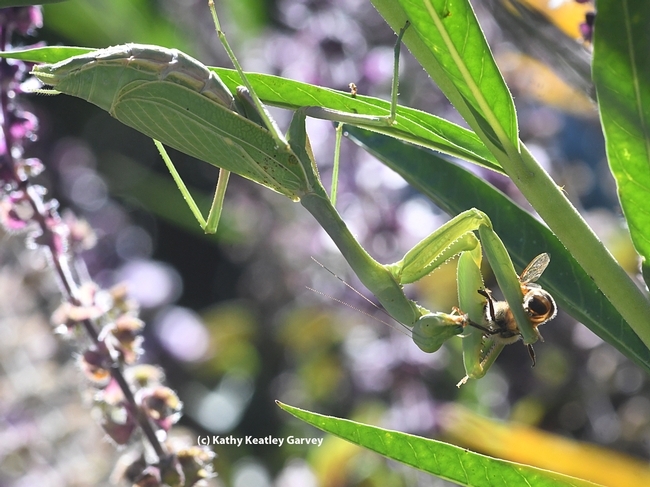- Author: Kathy Keatley Garvey
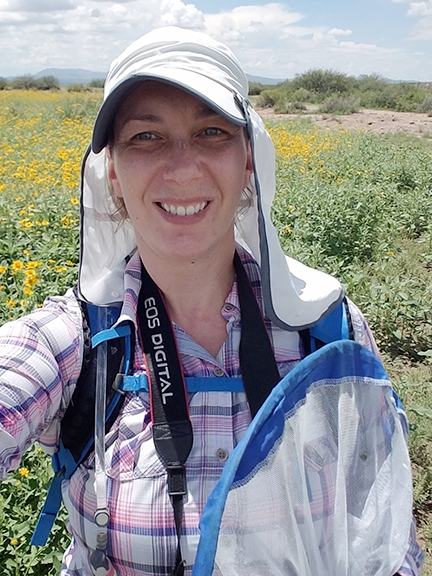
Several UC Davis bumble bee enthusiasts--encouraged by native pollinator specialist Robbin Thorp, UC Davis distinguished emeritus professor of entomology--compete every January to find the first bumble bee of the year in Yolo and Solano counties.
It's a friendly competition. Gamers include Allan Jones, Gary Zamzow, both of Davis, and yours truly.
We have a winner!
Drum roll...
On Thursday, Jan. 10 doctoral student Kim Chacon photographed a black-tailed bumble bee, Bombus melanopygus, on manzanita blossoms in the UC Davis Arboretum and Public Garden.
What a delightful find! And in between the rain drops!
This species is native to western North America, ranging from California to British Columbia and as far east as Idaho. It's commonly found on manzanitas, wild lilacs, wild buckwheats, lupines, penstemons, clovers, and sages, among others.
Chacon actually spotted an earlier bumble bee on Jan. 9 at 2:10 p.m. in the UC Davis Arboreutm, but had only her cell phone with her that day. It was a Bombus melanopygus on Arbutus in the Ericaceae section.
She captured some images with her cell phone, but "there was a big downpour about 15 minutes and I didn't bring my good camera, so I went home for the day. I know from my research that this particular location in the Arboretum is a hot spot for bees. The banks and flowering vegetation get plenty of sun. There are three possible spots in the Arboretum, according to my research, and this one had blooming flowers first."
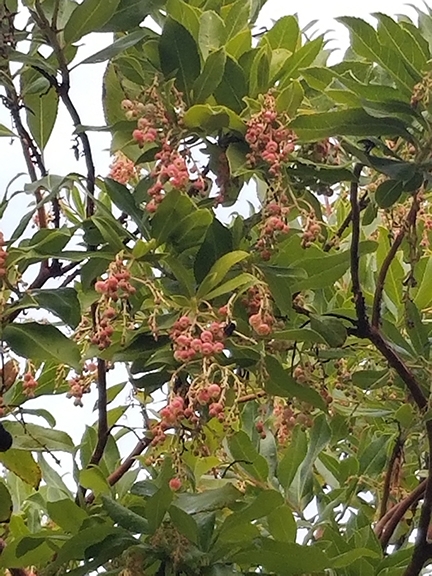
But on Jan. 10, "I woke up determined to get good photos with my good camera!" She walked over to the Ericaceae section again in the Arboretum and spotted a Bombus melanopygus at 3:58 p.m. (See photos below)
Chacon, a UC Davis PhD student in geography, studies "habitat connectivity issues for bees at a landscape scale."
"Lack of habitat connectivity is listed as the main reason for native bee declines and yet, thus far solutions only include stand alone gardens, with randomly spaced unspecified plant species," she commented. "A spatial habitat problem such as destruction and fragmentation needs a spatial solution. I am working on solving this complex problem with the help of Geographic Information Systems (GIS). Part of my research involved weekly monitoring bee visitation of bees throughout the UC Davis Arboretum for one full year. I learned about the trends of bee-flower visitation within each unique themed garden, specifically, how they function as novel ecosystems. When I graduate I hope to design effectively connected landscape habitat for bees. I would also love to design educational gardens, showcasing bee diversity!"
Chacon is a 2018 alumnus of The Bee Course, a nine-day intensive workshop affiliated with the American Museum of Natural History and held annually at the Southwestern Research Station, Portal, Ariz. It's offered for conservation biologists, pollination ecologists, and other biologists who want to gain greater knowledge of the systematics and biology of bees. This year's dates are Aug. 18-28, and the deadline to apply is March 1, 2019.
Thorp is one of the veteran instructors of The Bee Course; he has taught there annually since 2002. A member of the UC Davis entomology faculty from 1964 to 1994 and internationally recognized for his expertise on bees, he achieved "distinguished emeritus professor" status in 2015. He co-authored the UC California book, California Bees and Blooms: A Guide for Gardeners and Naturalists (Heyday) and Bumble Bees of North America: An Identification Guide (Princeton University Press).
Thorp continues his research, writings and bee identification at his office in the Harry H. Laidlaw Jr. Honey Bee Research Facility at UC Davis.
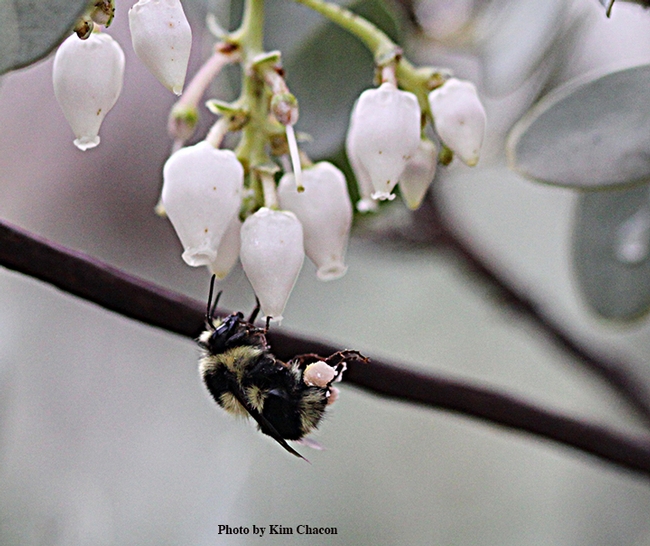
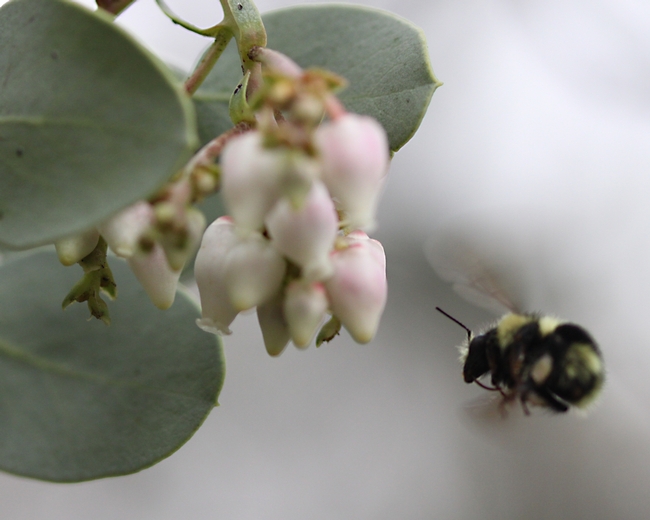
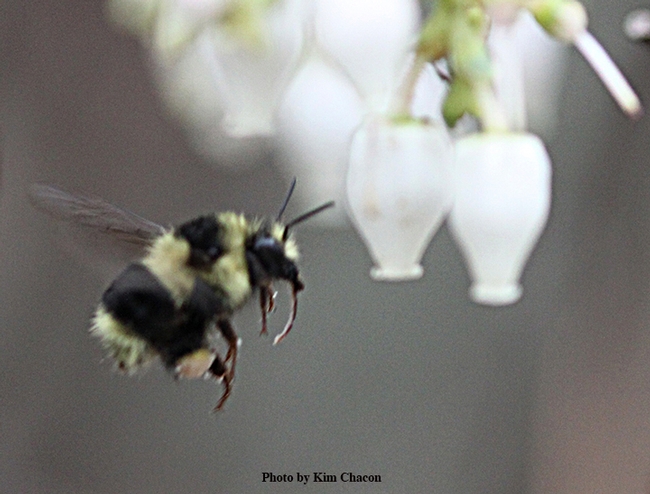
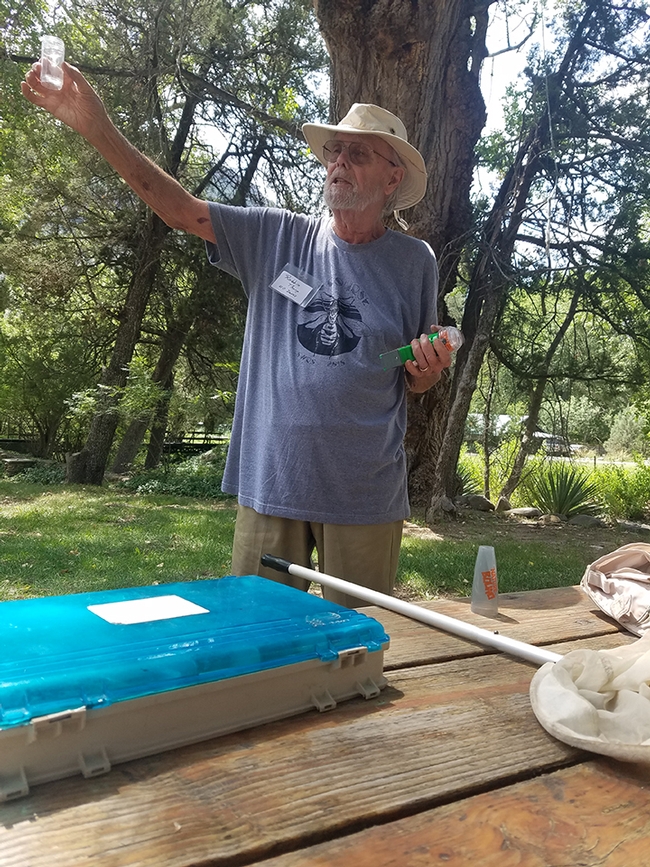
- Author: Kathy Keatley Garvey
When you head over to a nursery, and see bees and butterflies and other pollinators foraging on the plants, that's a good sign.
Buy the plants.
Promise: The pollinators will come.
Many gardeners and would-be gardeners are looking forward to the UC Davis Arboretum and Public Garden Plant Sale--the "first entirely open-to-the-public plant sale of the fall season." It's set from 9 a.m. to 1 p.m., Saturday, Oct. 13 in the Arboretum Teaching Nursery on Garrod Drive, near the School of Veterinary Medicine.
Members of the Friends of the UC Davis Arboretum and Public Garden and the Davis Botanical Society receive 10 percent off their purchases. You can join online, at the door, or call ahead, officials say. New members receive a $10-off coupon as a thank you for joining.
That's a good incentive.
What plants are they offering? Download the inventory.
Meanwhile, summer has ended, fall crept in on Sept. 23, and winter is fast approaching--Dec. 21.
We caught a little sliver left of mellow mornings last weekend in the Kate Frey Pollinator Garden at Sonoma Cornerstone. An anise swallowtail, Papilio zelicaon, fluttered in, touched down to sip some nectar, and soared off. What a sight to see!
Buy a plant (help the UC Davis Arboretum and Public Garden), and promise, the pollinators that will surely come are free!
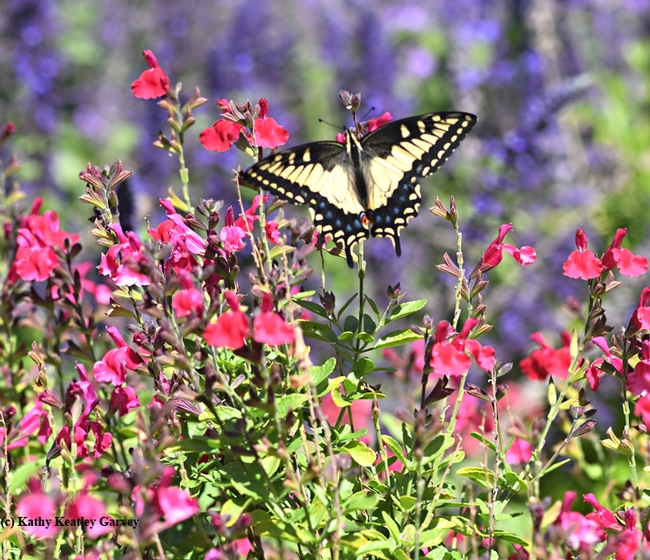
- Author: Kathy Keatley Garvey
You hike it, bike it, and sight-see it.
You exercise the dog (and yourself), meet up with friends...and take images.
That would be at the UC Davis Arboretum and Public Garden, and now the officials want to see your images--or up to five of your best images. Eligible entrants are UC Davis faculty and staff (current and retired) and students (current and alumni).
What It's All About: UC Davis Repro Graphics, in collaboration with the UC Davis Arboretum and Public Garden, is sponsoring the UC Davis Calendar Photo Contest, with the winning images to be published in the Repro Graphics' annual made-to-order calendar giveaway.
The contest is open to professional and amateur photographers, provided they are affiliated with UC Davis in a capacity listed above. Photos must be horizontal images, at least 2760 pixels wide by 1874 pixels tall and in .jpg format.
Background: Each year, around October, Repro Graphics notifies faculty and staff about the availability of the made-to-order calendar giveaway. You pick the photo you like from the selected images, and soon, the calendar arrives in your mailbox. (You can also add any personalized dates such as birthdays and anniversaries.)
The top six photos, as rated by a panel of judges, will be posted on the UC Davis Arboretum and Public Garden's Facebook page where the public will vote for their favorites.
The prize? As the officials said: "A chance to be one of the featured selections in the next Repro Graphics made-to-order calendar, a gift bag of UC Davis swag, a professionally framed print of your winning photo and last, but not least, exposure for your talent on the walls of cubicles and offices campus-wide!"
Subjects? They could include landscapes, insects (think honey bees, bumble bees and butterflies), animals (think otters, chipmunks and ducks) and people (with signed photo release). However, entries may not contain the following: alcohol, drugs, or any kind of illegal or inappropriate behavior.
Deadlines:
- Submit up to five photos by 5 p.m., Wednesday, Sept. 5
- Voting begins at noon on Friday, Sept. 14 on the UC Davis Arboretum and Public Garden Facebook page
- Voting ends at 11:59 on Thursday, Sept. 27
- Winners announced Friday, Sept. 28
Find more information (rules and how to submit) on this page.
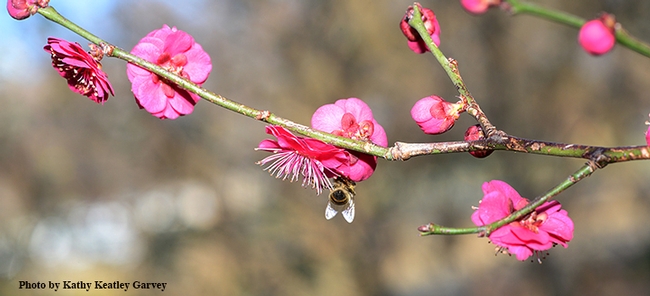
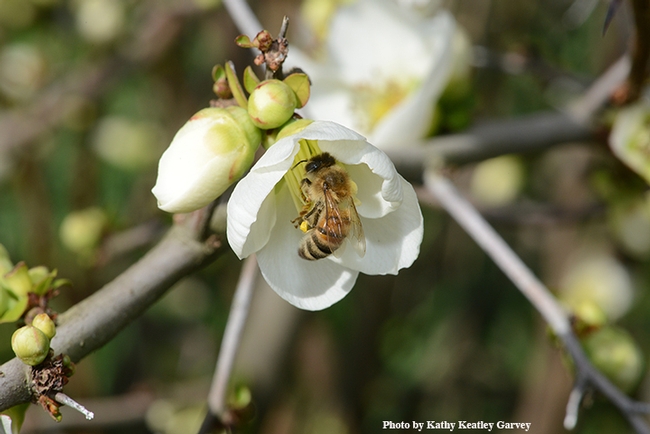
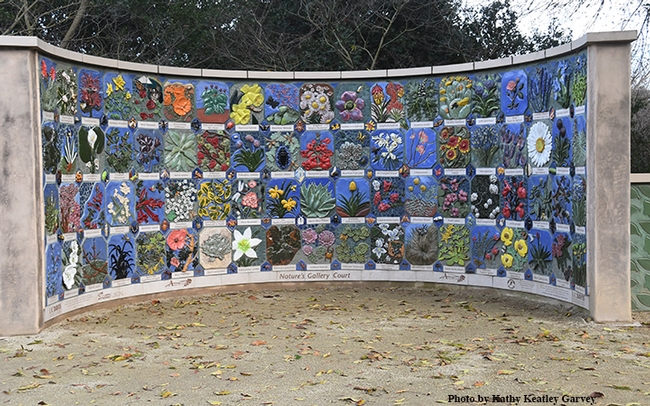
- Author: Kathy Keatley Garvey
If you've been thinking about blanketing your garden with blanketflower (Gaillardia), you're in luck.
The UC Davis Arboretum and Public Garden is hosting a spring plant sale from 9 a.m. to 1 p.m., Saturday, March 10 at its Arboretum Teaching Nursery on Garrod Drive, located across from the School of Veterinary Medicine.
And Gaillardia will be available.
The one-ace nursery "has an incredible selection of Arboretum All-Stars, California natives, and thousands of other attractive, low-water plants perfect for creating a landscape alive with environmentally important pollinators," officials said.
Gaillardia is a favorite among pollinators, including honey bees, bumble bees, butterflies, hummingbirds, and syrphid or hover flies. You'll see them buzz, fly or flutter over to it. It's a member of the sunflower family Asteraceae, and native to North and South America. Named for M. Gaillard de Charentonneau, an 18th-century French magistrate and botany enthusiast, the plant is commonly called "blanketflower"--probably because it's reminiscent of the colorful blankets crafted by the native American Indians.
The genus includes dozens of species. Among those available at the UC Davis plant sale are Gaillardia 'Celebration'; Gaillardia 'Red Sun'; and Gaillardia x grandiflora or 'Arizona apricot.'
The plant sale is a "Membership Only Appreciation Sale," but you can become a member online now or at the gate on Saturday. Members receive 10 percent off their purchases and an additional $10-member appreciation gift. New members will receive an additional $10-off coupon as a thank you for joining. Davis Botanical Society members also receive a 10 percent discount on their plant sale purchases.
Here's a list (PDF) of what's being offered.
Plant them and they (the pollinators) will come. And sometimes you'll see a little predator-prey interaction--like a praying mantis lying in wait--but that's okay, too. Everybody eats!
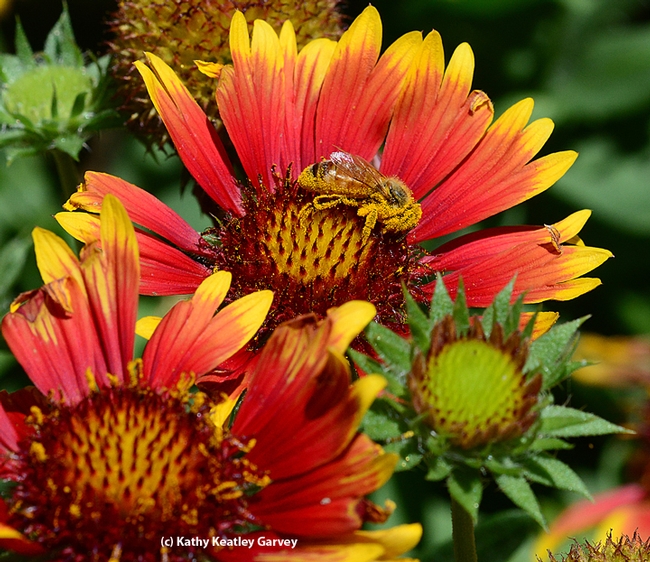
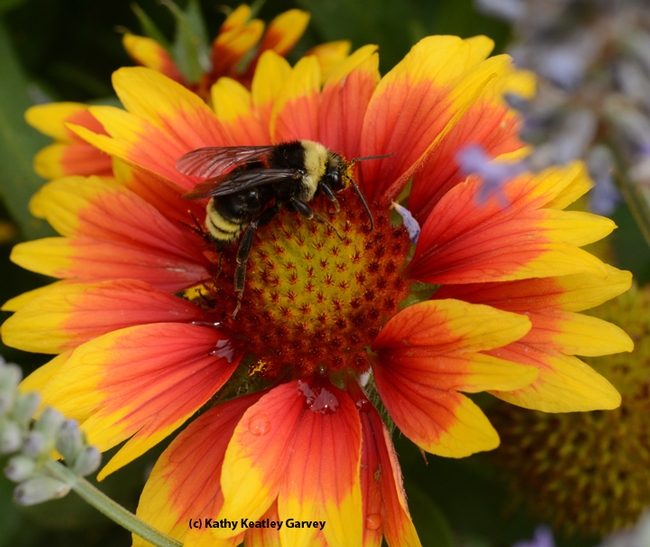
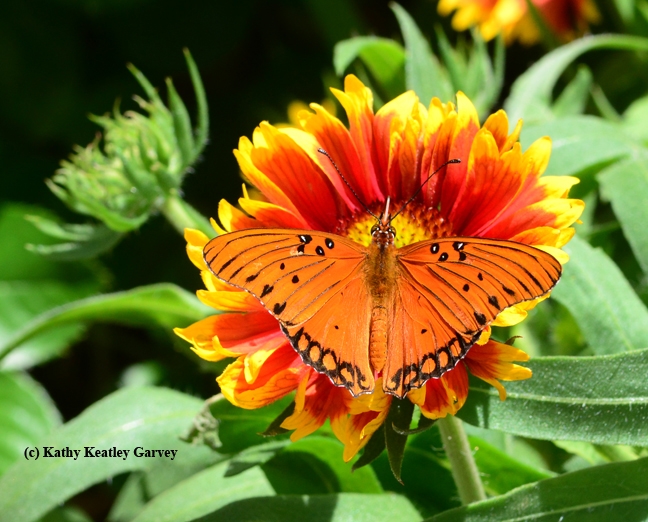
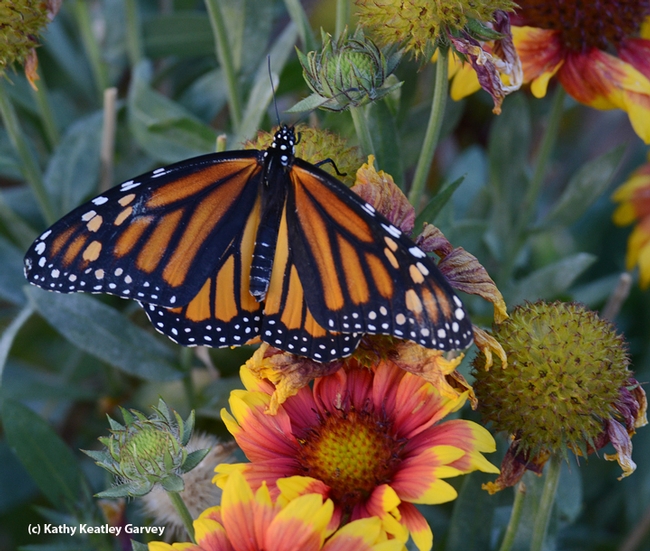
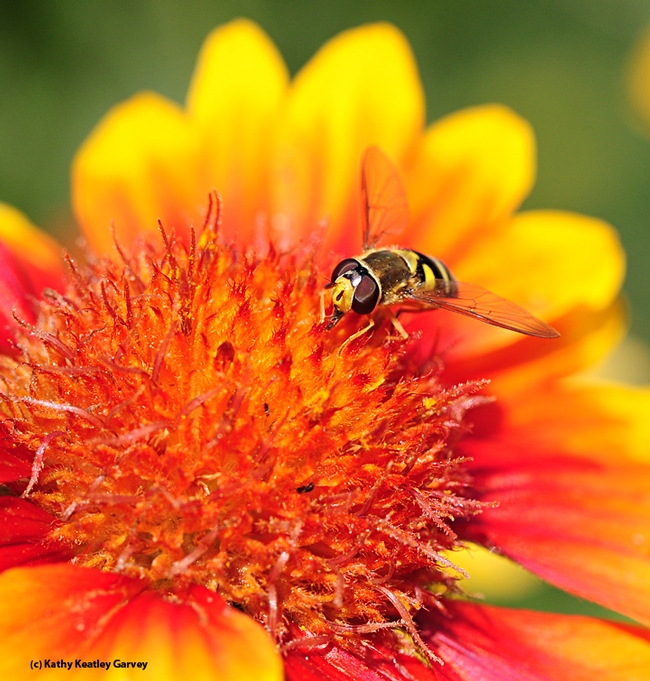
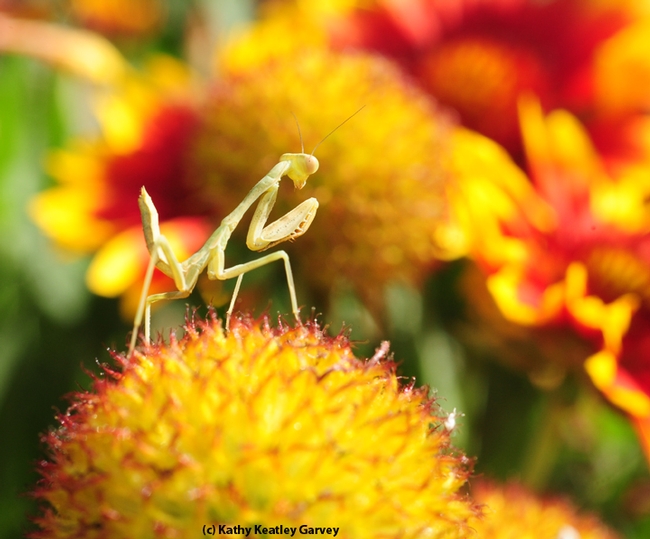
- Author: Kathy Keatley Garvey
Surprise! Surprise!
You never know what you'll see when you're strolling through the 100-acre UC Davis Arboretum and Public Garden, a treasure to students, faculty, staff and visitors.
Case in point: For the last several months, we've been admiring a Mexican grass tree, Dasylirion longissimum, a 10-foot tall drought-tolerant plant with long, needle-like leaves radiating from its trunk. So perfect. So exquisite. Kinetic art at its finest. Indeed, it's often described as an "architectural wonder" in the plant world. Scores of horticulturists in California and the southwest United States favor it as their focal point for their xeriscape landscape projects.
The plant is native to the Chihuahuan Desert, which extends from West Texas, through parts of New Mexico and Arizona, and into much of the central and northern portions of the Mexican Plateau. It can tower 15 feet in height.
Last week we noticed something different about its presence in the UC Davis Arboretum: a brown clump clinging to the faded green wiry spikes.
Could it be? It was. A praying mantis egg case or ootheca.
To protect it from "egg gatherers," we won't indicate the exact location. But it is clear evidence that a female praying mantis was there and she, no doubt, ambushed and devoured honey bees, syrphid flies and butterflies before mating and producing the egg case.
Mantis expert Andrew Pfeifer, administrator of the popular Facebook page, "Mantis Keepers," says the ooth appears to be the work of a Stagmomantis limbata.
California has only a handful of mantid species, Pfeifer says. The natives include Stagmomantis limbata, Stagmomantis californica and Litaneutria minor. Introduced ones: Mantis religiosa, Tenodera sinensis and Iris oratoria. “Typically you have pockets for native species where you see only one,” he says.
We usually begin seeing sizable mantids around July and continuing through October. We photographed this one, a Stagmomantis limbata, perched on showy milkweed (Asclepias speciosa) on Oct. 3, 2017 in Vacaville, Calif., as she nailed unsuspecting prey. In this case, a honey bee.
Her egg case is probably around somewhere....but she didn't lay it on our milkweed....or our Mexican grass tree....
